THE MINISTRY OF EDUCATION AND TRAINING ALWAYS REQUIRES FAIRNESS IN ENROLLMENT…
In recent years, the Ministry of Education and Training has emphasized the fairness factor among candidates in the admission process. The Ministry of Education and Training has implemented a number of technical solutions for admission to realize the above goals, such as adjusting priority points, eliminating early admission, converting equivalent admission scores between admission methods and combinations, etc.

This year's university admission scores show paradoxes and raise questions about fairness in university admissions.
PHOTO: DAO NGOC THACH
Faced with the situation that up to 82% of university admission candidates are in the priority bonus category, since 2014, the Ministry of Education and Training has adjusted the score levels and rearranged the priority points areas more reasonably. By 2023, the Ministry of Education and Training will continue to have a solution to completely change the way of calculating priority points for admission in the direction that the higher the test score, the lower the priority points are to avoid the situation where candidates in non-priority areas fail even though they have very high test scores. Since then, the Ministry has reduced the priority bonus points from 22.5 points and above, the reduction from 0.75 points to 0 points.
The high school graduation exam has two goals: to both recognize general knowledge standards and to differentiate for universities to rely on for admission. However, with the policy of diversification, many schools still use transcripts, international certificates, competency assessment exams, separate entrance exams... Each tool has its own value, but this year, with the desire for fairness and transparency in admission, the Ministry of Education and Training has provided the score distribution of popular combinations of high school graduation exams and high school learning results. Based on that, schools build and clearly announce the conversion of admission scores between combinations and other methods.
According to regulations of the Ministry of Education and Training, this year all universities use the percentile method to ensure equivalent admission scores and input thresholds between admission methods.
… BUT REALITY IS FULL OF PARADOXES
That is the theory, but the actual result is a conversion matrix because each school has a different conversion method. For example, with the same 850 points in the competency assessment exam of Ho Chi Minh City National University, at school A, a candidate can be converted to 28 points, while at school B, it is only 25 points. Not to mention that many schools set coefficients that are favorable for academic records or competency assessment, causing the standard score according to the graduation exam to be pushed up, although in reality, few candidates are admitted through this channel.

Successful candidates complete admission procedures. Candidates have just gone through a confusing admission process in establishing benchmark scores.
PHOTO: DAO NGOC THACH
Another reason for the high benchmark scores this year is the expansion of the admission combination and the right of candidates to choose the subject with the highest score. As a result, the benchmark scores of many majors are "distorted", not reflecting the actual test scores. Candidates are in a "gambling" position, and schools are also caught up in the complicated formula instead of proactively choosing. These things lead to unfairness in the admission process for candidates who only use test scores for admission.
This year’s admission season has seen many students who only scored 20-23 points on the high school graduation exam but still passed the majors with the announced standard scores of 25-27. The paradox is even greater when there are many majors with absolute standard scores of 30/30, including majors with 2 subjects: math and English, even though the test scores for these subjects have decreased. The reason lies in the universities’ point-adding policy.
The policy of adding points and converting international language certificates is also inconsistent. Some schools only convert, while others convert and add up to 3 points. As a result, the exam scores are much higher than the exam scores. Even within the same school, one major converts differently from another.
This leads to a paradox where a student with 27 points, plus priority and foreign language certificate, is raised to 30 points, passing the "hot" major. On the contrary, a student with 29 points actually fails because of lacking... 1 bonus point.
THE BALANCE OF FAIR IS REVERSED
Faced with this reality, the head of the training department of a university in Ho Chi Minh City said that it is necessary to re-evaluate the real effectiveness of continuous adjustments in enrollment.
This expert analyzes an example of changes in preferential point and bonus point policies in admissions.
"These adjustments are reasonable if this year there are no new regulations allowing universities to add bonus points for admission according to their own regulations. Accordingly, universities have many different ways to add bonus points for students when considering admission to the school such as: foreign language certificates, students of specialized/gifted schools, other international certificates, awards, even adding points for students of high schools that have signed cooperation agreements with the university... Although the Ministry has regulations to control the maximum bonus points of 10% of the total admission score, 3 points on a total 30-point scale has become a very big problem," this expert commented.
"Not only adding points, allowing schools to convert international foreign language certificates into English scores for admission purposes leads to great inequality between students with good economic conditions, living in urban areas who have enough conditions and opportunities to study and achieve high scores in IELTS English certificates, and students with difficult economic conditions, living in remote areas who do not have the opportunity to study foreign language certificates," this expert continued to analyze the fairness factor in this year's admissions.
Previously, there were also university admission scores of 30/30, even over 30 points due to regional priority points. But when adjusting the regional priority policy, another injustice occurred: foreign language points were added as analyzed above.
Thus, the regional priority points, which were originally reserved for the majority of disadvantaged areas, were tightened, while the international certificate bonus points and excellent student award points, which were originally reserved for a small group with favorable conditions, were expanded. The balance of fairness was reversed.
We can look at the experience from the US. Although they recruit students through multiple channels: GPA, SAT/ACT, AP/IB, plus essays and extracurricular activities, they do not convert them all to the same scale. GPA is still on a 4.0 scale; SAT/ACT has its own scale; AP/IB too. Universities build a comprehensive recruitment model, considering the individual context. That is, they manage differences, not "erase" differences.
Vietnam goes in the opposite direction: assimilating everything into a hypothetical scale. The result is apparent fairness, intrinsic injustice.
IELTS 5.0 or 8.5 are both converted to 10
According to this year's admission regulations, universities can convert foreign language certificates into foreign language scores to include in the admission subject group. To convert an IELTS certificate into 10 points for English, some schools accept 5.0 but some schools require 8.5. For example, the Diplomatic Academy stipulates that candidates with a 7.0 IELTS are only equivalent to 8.5 points for English; from 8.5 IELTS or higher, TS can be converted into 10 points. Meanwhile, the University of Commerce accepts conversion into 10 points for English with candidates with an IELTS certificate of 5.0 or higher.
The points awarded to candidates with international language certificates are also different in different schools. For example, the National Economics University adds 0.75 points to all candidates with international English certificates, regardless of the score. Meanwhile, Hanoi University adds bonus points to candidates with foreign language certificates at levels from 1 to 4, but not exceeding 10% of the total admission score.
There are pedagogical majors that most PhDs are admitted to based on their academic records only.
This year, schools must convert equivalent scores between methods and, in general, regardless of the quota of each method, candidates with higher converted scores of which method will be admitted by that method.
That is one of the reasons why some majors, including pedagogy, have suddenly increased their admission scores and the admission list is mainly based on the method of considering academic records because academic records are often higher than high school graduation exam scores. This causes injustice for the candidates considering high school graduation exam scores.
"This situation does not happen every year because admission is based on each method, but this year the Ministry has stipulated to convert equivalent scores and consider them together, so in order to get the right quota, schools are forced to increase the standard score. When the high school exam standard score increases, the standard scores of other methods also increase. At that time, candidates with higher scores from whichever method are admitted will be admitted by that method. There is no other way," said the leader of a university that trains in pedagogy.
"The admission period was confusing and unfair for the students, but the school could not handle it because it had to follow the Ministry's regulations. With this situation, the school's education department will not consider the transcript method next year," this person shared.
My Quyen
Source: https://thanhnien.vn/cong-bang-tuyen-sinh-dai-hoc-185250827211900076.htm




![[Photo] Cat Ba - Green island paradise](/_next/image?url=https%3A%2F%2Fvphoto.vietnam.vn%2Fthumb%2F1200x675%2Fvietnam%2Fresource%2FIMAGE%2F2025%2F12%2F04%2F1764821844074_ndo_br_1-dcbthienduongxanh638-jpg.webp&w=3840&q=75)











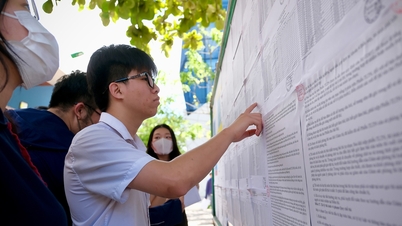











































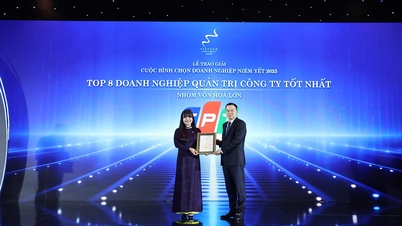



![[VIMC 40 days of lightning speed] Da Nang Port: Unity - Lightning speed - Breakthrough to the finish line](https://vphoto.vietnam.vn/thumb/402x226/vietnam/resource/IMAGE/2025/12/04/1764833540882_cdn_4-12-25.jpeg)
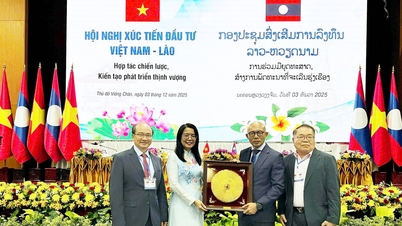















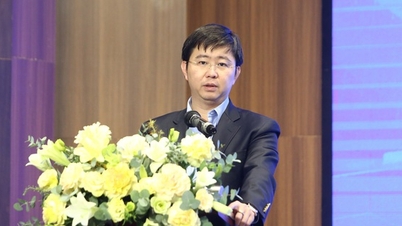







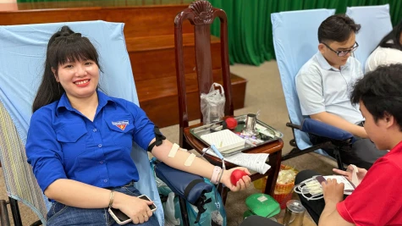





















Comment (0)